Abstract
The mortality of all 14,327 people who were known to have been employed at the Sellafield plant of British Nuclear Fuels at any time between the opening of the site in 1947 and 31 December 1975 was studied up to the end of 1983. The vital state of 96% of the workers was traced satisfactorily and 2277 were found to have died, 572 (25%) from cancer. On average the workers suffered a mortality from all causes that was 2% less than that of the general population of England and Wales and 9% less than that of the population of Cumberland (the area in which the plant is sited). Their mortality from cancers of all kinds was 5% less than that of England and Wales and 3% less than that of Cumberland. In the five years after their first employment Sellafield workers had an overall mortality that was 70% of that of England and Wales, probably due to healthier members of the population being selected for employment. Raised death rates from cancers of several specific sites were found, but only for those of ill defined and secondary sites was the excess statistically significant (30 observed, 19.7 expected). For cancers of the liver and gall bladder there was a significant deficit of deaths (four observed, 10.5 expected). Workers in areas of the plant where radiation exposure was likely were issued with dosimeters to measure their external exposure to ionising radiations. Personal dose records were maintained for workers who entered such areas other than infrequently. Workers with personal dose records ("radiation" workers) had lower death rates from all causes combined than other workers but the death rates from cancer in the two groups were similar. Compared with the general population radiation workers had statistically significant deficits of liver and gall bladder cancer, lung cancer, and Hodgkin's disease. There were excesses of deaths from myeloma (seven observed, 4.2 expected) and prostatic cancer (19 observed, 15.8 expected) but these were not significant and there was no evidence of an excess of leukaemia (10 deaths observed, 12.2 expected) or cancer of the pancreas (15 observed, 17.8 expected). Non-radiation workers had a significant deficit of leukaemia (one death observed, 5.1 expected) and a significant excess of cancers of ill defined and secondary sites (13 deaths observed, 5.8 expected). For no type of cancer was the ratio of observed to expected deaths significantly different between radiation and non-radiation workers.(ABSTRACT TRUNCATED AT 400 WORDS)
Full text
PDF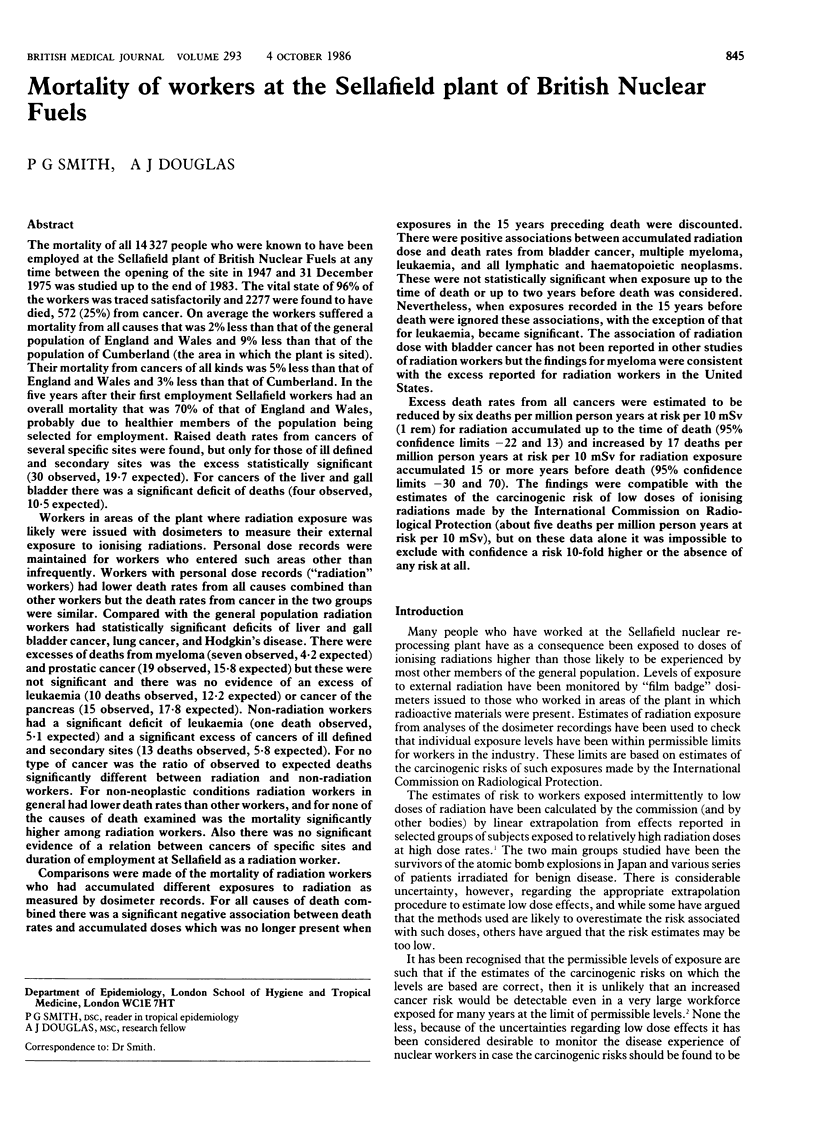
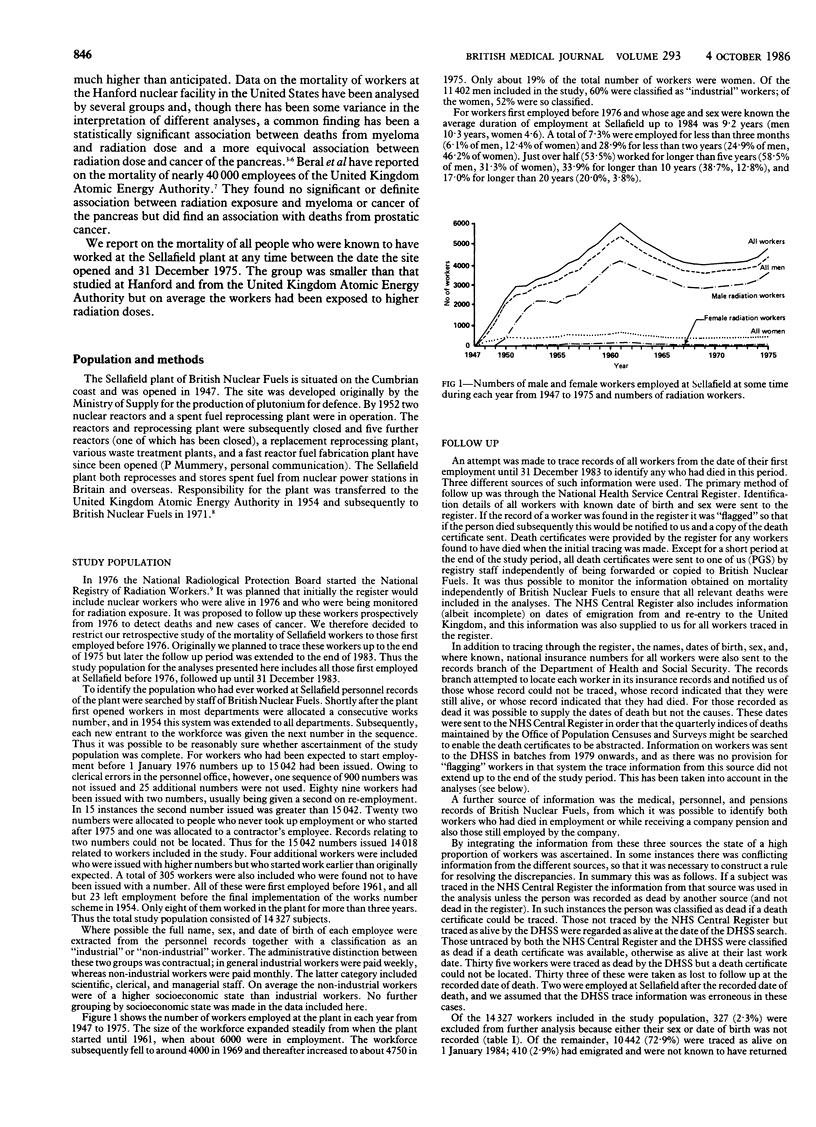
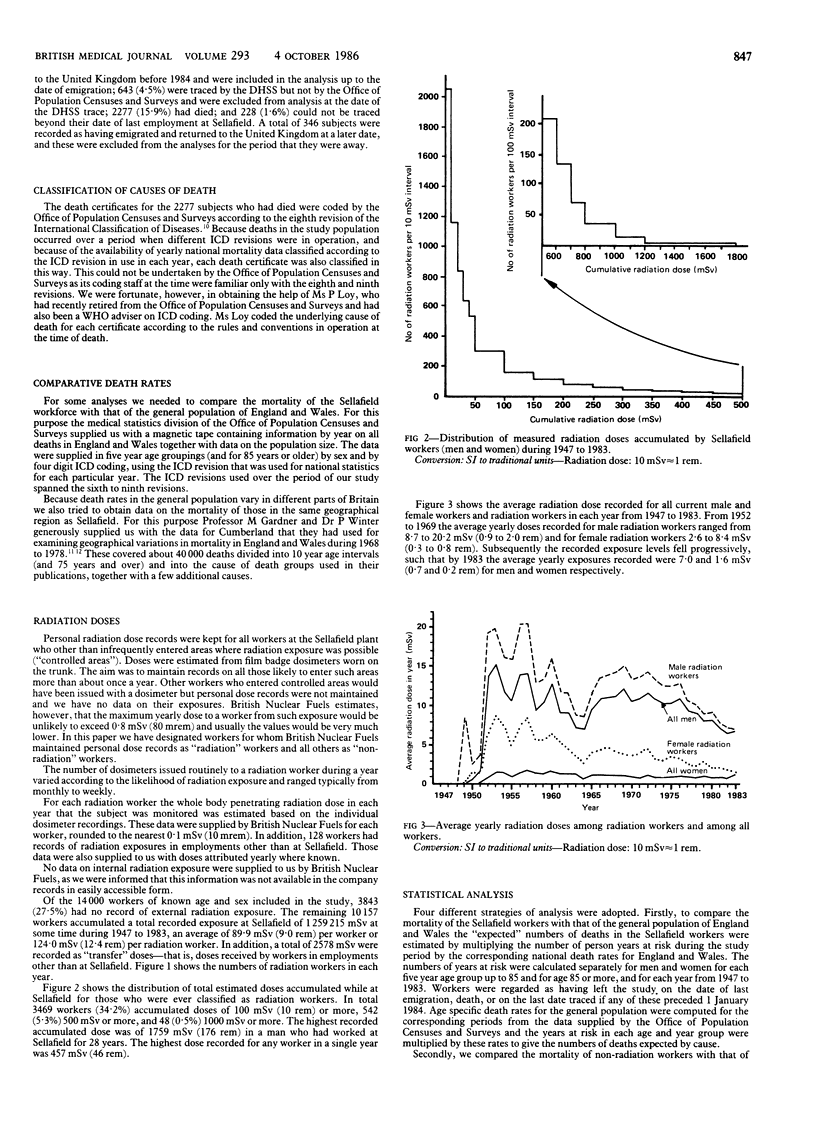
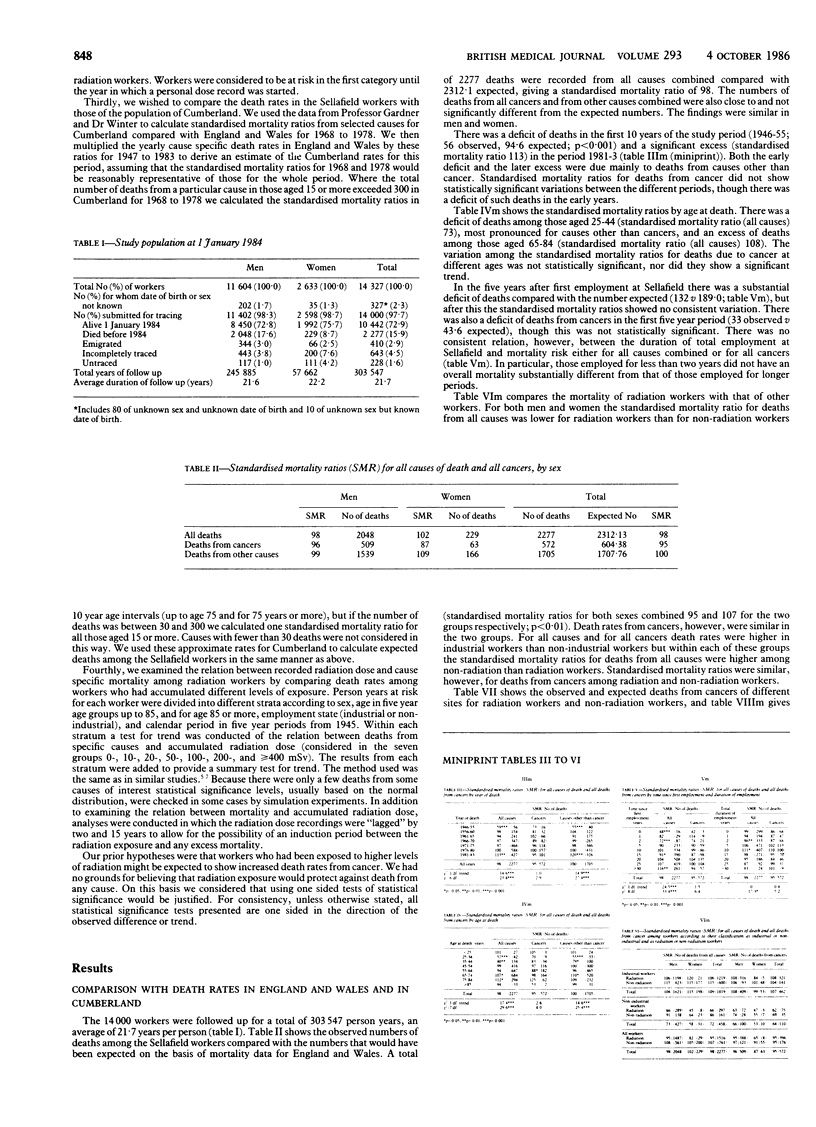
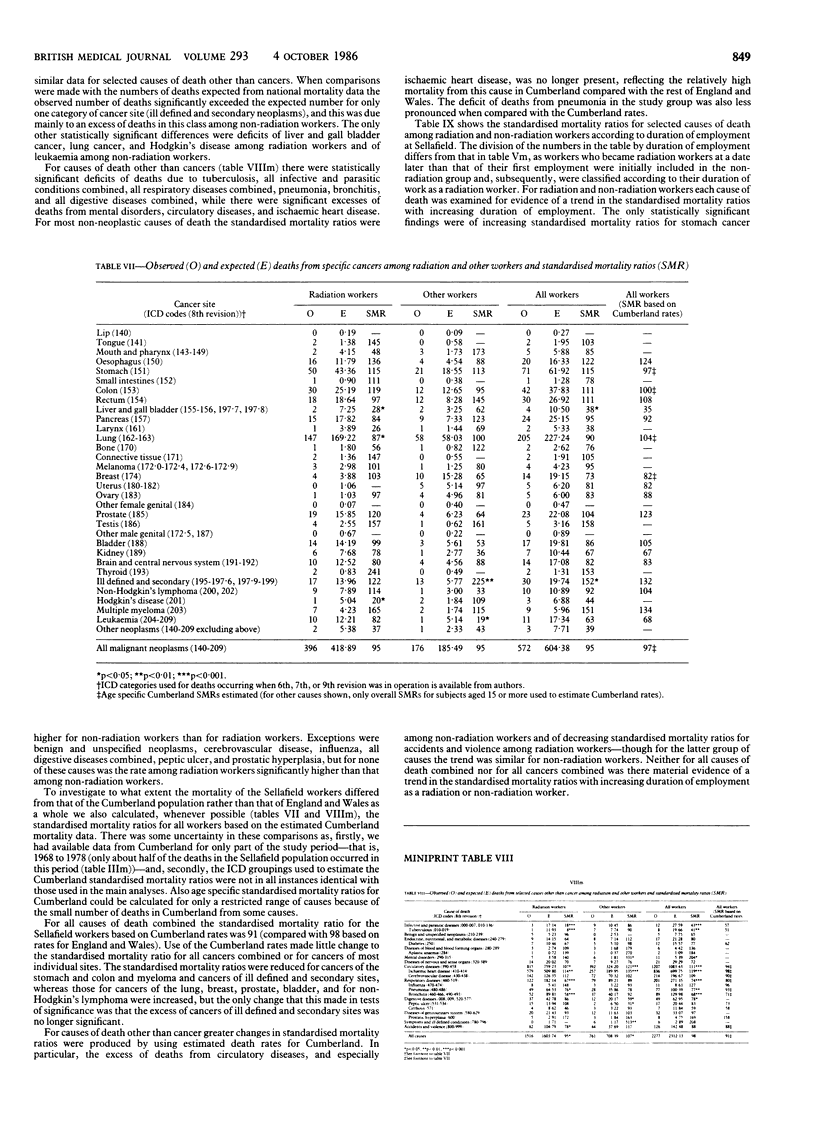
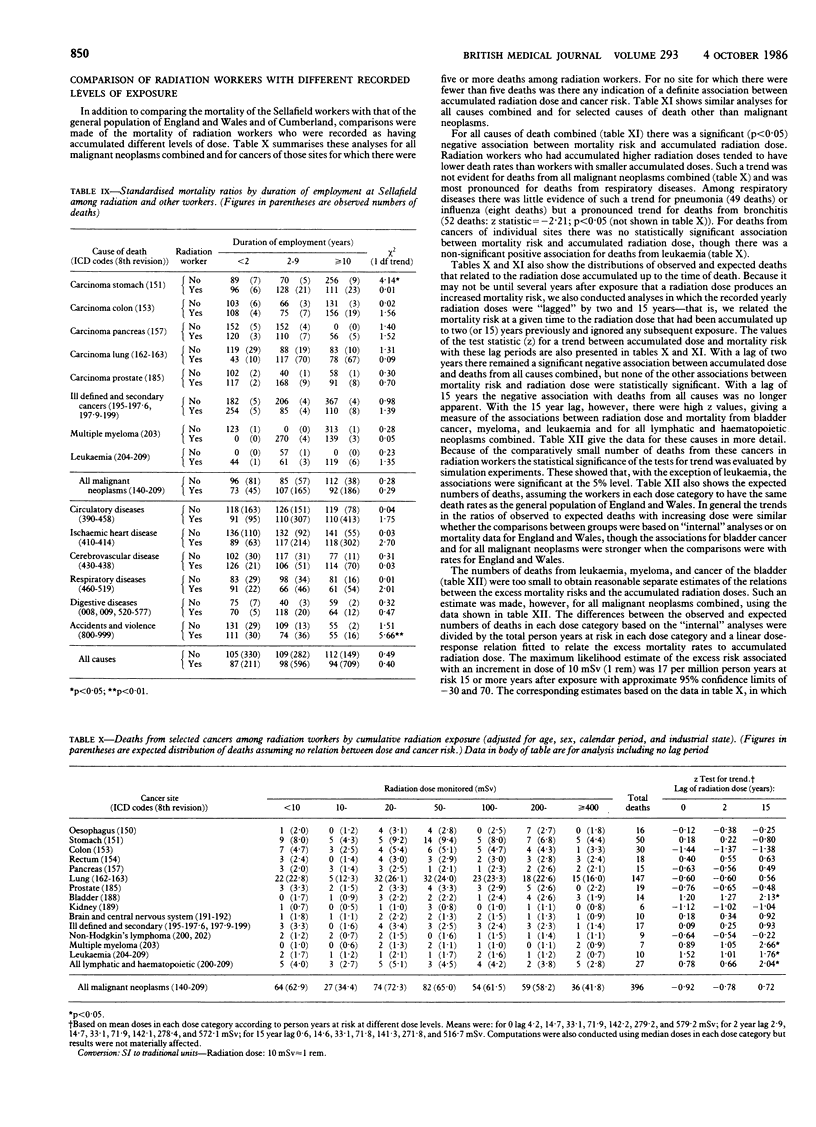
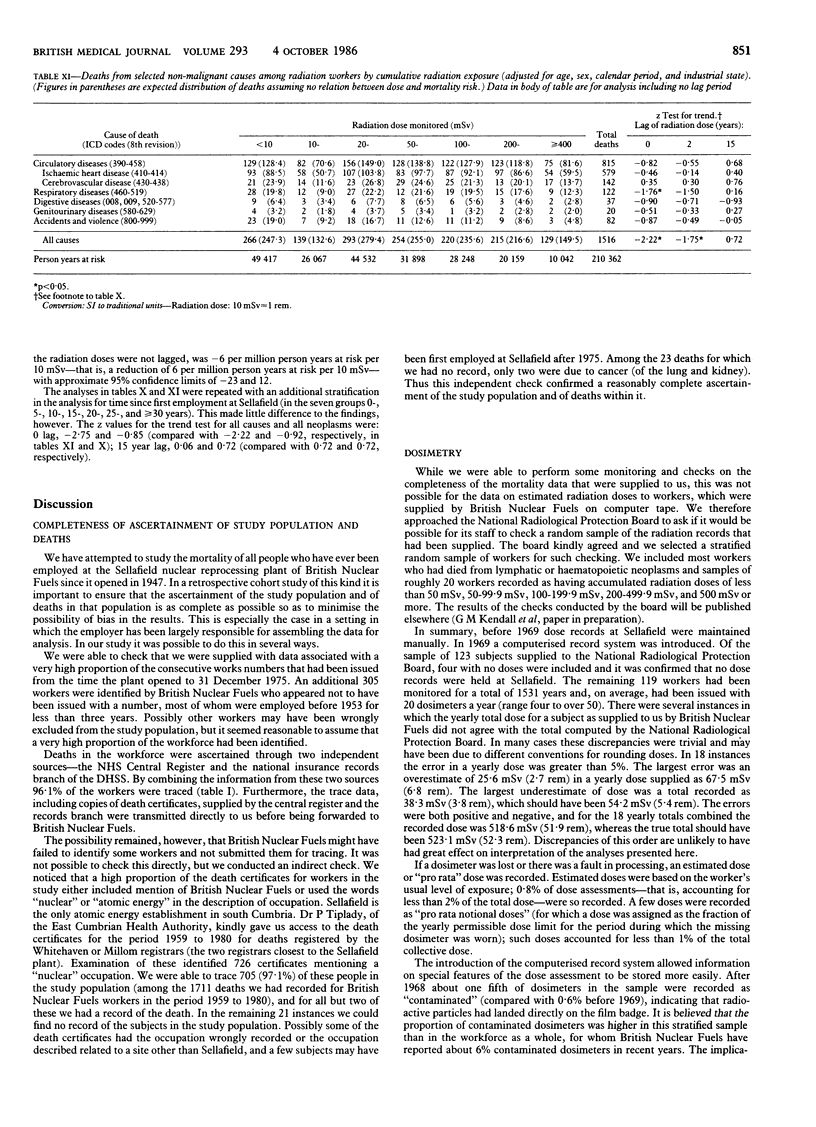
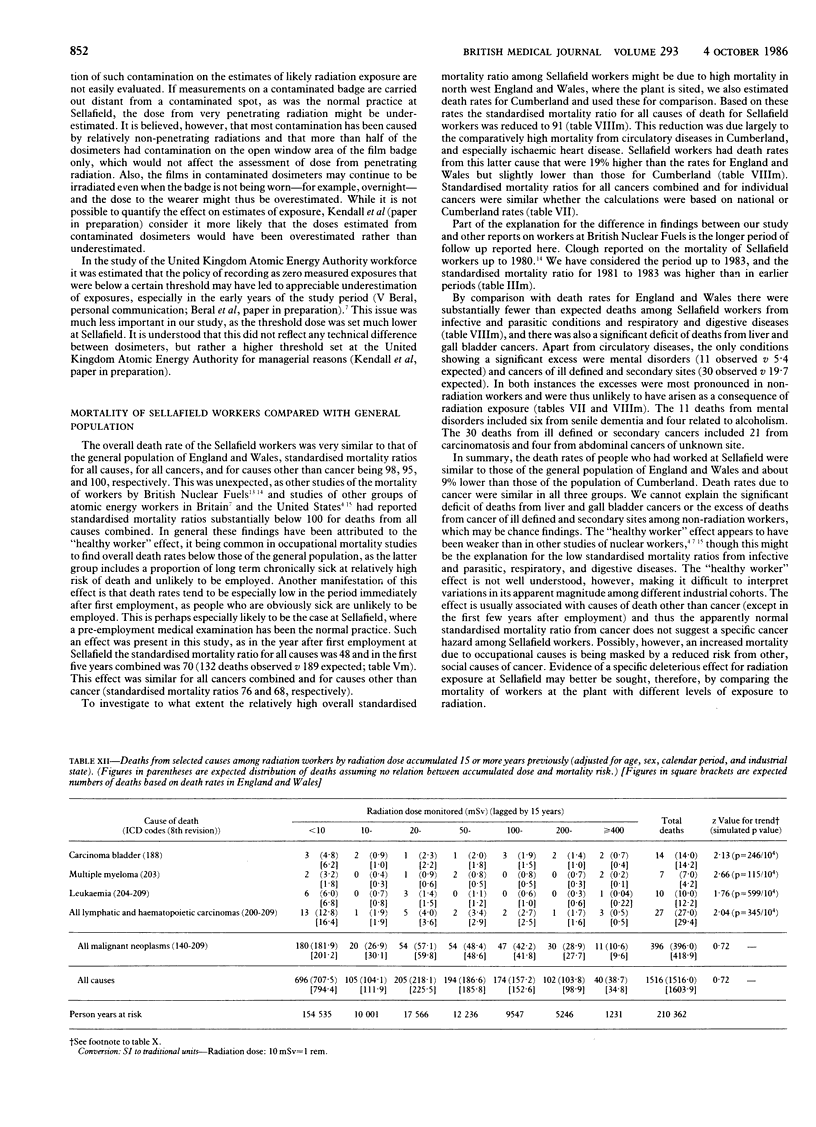
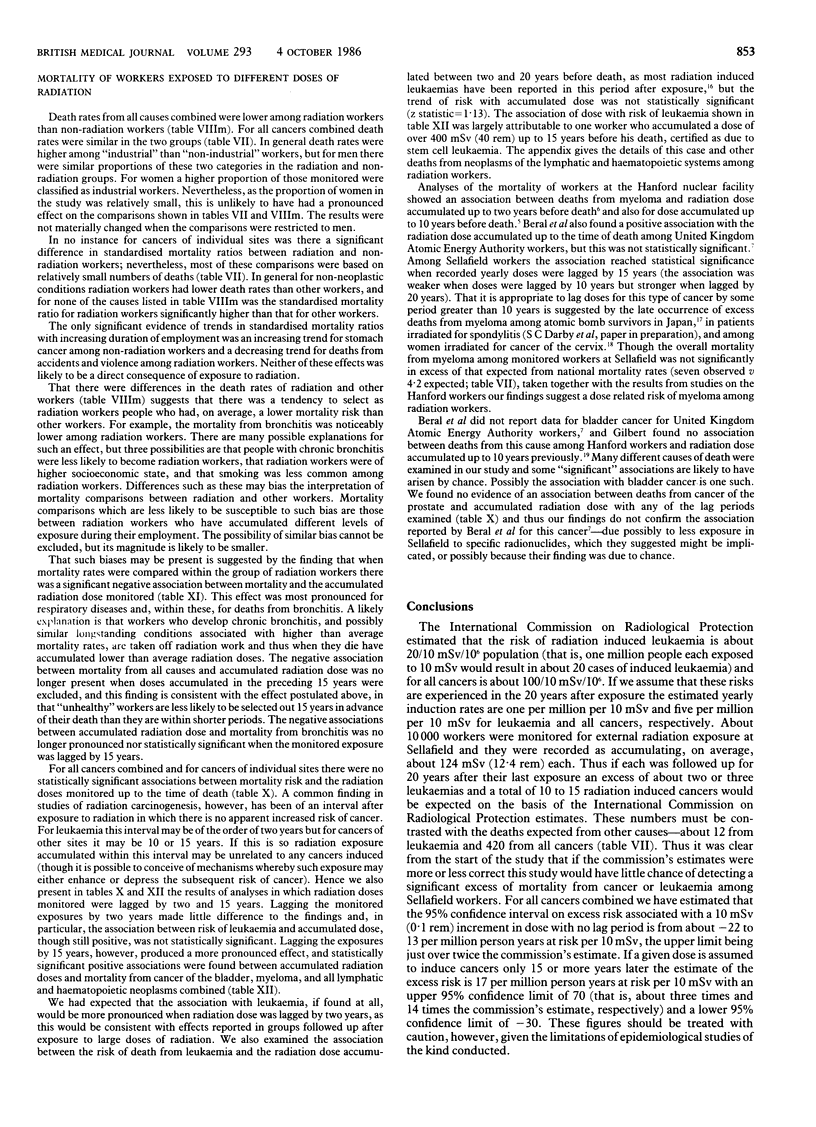
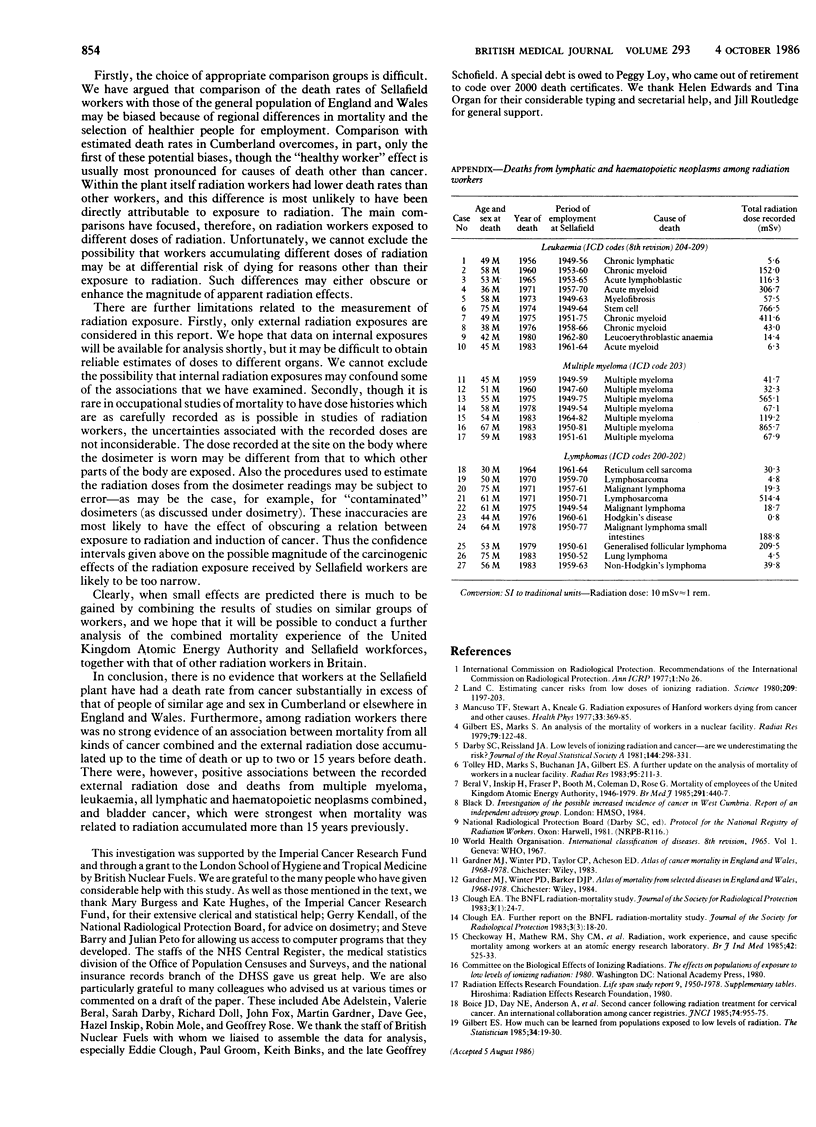
Selected References
These references are in PubMed. This may not be the complete list of references from this article.
- Beral V., Inskip H., Fraser P., Booth M., Coleman D., Rose G. Mortality of employees of the United Kingdom Atomic Energy Authority, 1946-1979. Br Med J (Clin Res Ed) 1985 Aug 17;291(6493):440–447. doi: 10.1136/bmj.291.6493.440. [DOI] [PMC free article] [PubMed] [Google Scholar]
- Checkoway H., Mathew R. M., Shy C. M., Watson J. E., Jr, Tankersley W. G., Wolf S. H., Smith J. C., Fry S. A. Radiation, work experience, and cause specific mortality among workers at an energy research laboratory. Br J Ind Med. 1985 Aug;42(8):525–533. doi: 10.1136/oem.42.8.525. [DOI] [PMC free article] [PubMed] [Google Scholar]
- Gilbert E. S., Marks S. An analysis of the mortality of workers in a nuclear facility. Radiat Res. 1979 Jul;79(1):122–148. [PubMed] [Google Scholar]
- Mancuso T. F., Stewart A., Kneale G. Radiation exposures of Hanford workers dying from cancer and other causes. Health Phys. 1977 Nov;33:369–385. doi: 10.1097/00004032-197711000-00002. [DOI] [PubMed] [Google Scholar]
- Tolley H. D., Marks S., Buchanan J. A., Gilbert E. S. A further update of the analysis of mortality of workers in a nuclear facility. Radiat Res. 1983 Jul;95(1):211–213. [PubMed] [Google Scholar]


